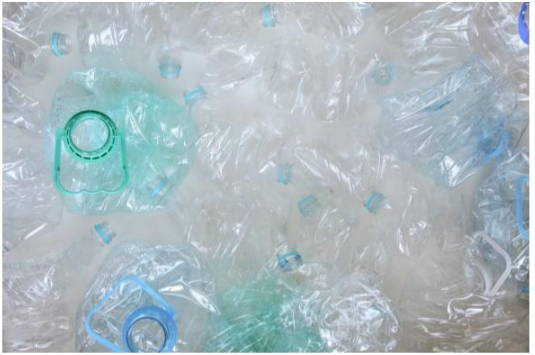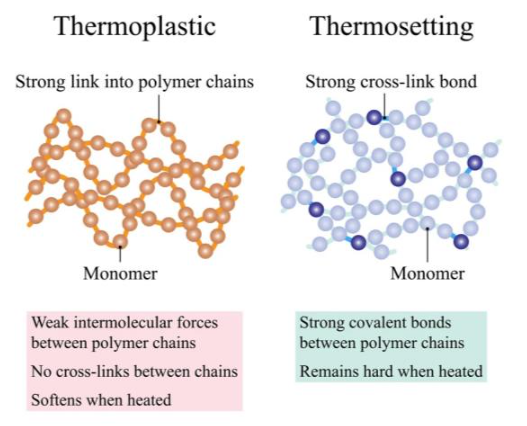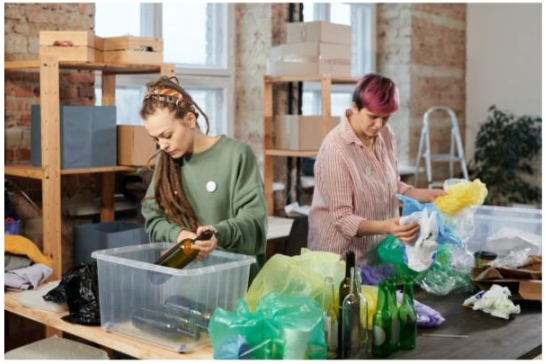https//:savetheenvironment.com
Good Plastic / Bad Plastic – How to differentiate?
Updated: May 14th, 2022

Good Plastic / Bad Plastic – How to Differentiate?
Plastic is easily the most controversial material of our time. In the original sense, “plastics” mean a pliable and easily moldable material. But in today’s terminology, it has been extended to include a wide range of polymers. Invented in 1869, modern day polymer plastics were originally created as a substitute for ivory in the manufacture of billiard balls. But owing to its unique properties such as high strength-to-weight ratio, water and shock resistance, thermal and electrical insulation and non-interactivity with the environment, it soon outgrew its intended purpose and began to replace other common materials in consumer products. Though it is one of the most versatile materials, it can also be one of the most harmful substances when it is mass produced and discarded indiscriminately. Sadly, plastics today receive the most attention because of its waste problem. But are plastics really bad materials? Let us explore the contextual nature of plastics: in usage and in discard, that will help us have a broader perspective about the material.
Types of Plastics
In terms of molecular composition, plastic comes in two types: thermoplastic and thermosetting. A thermoplastic consists of linear polymers that slide along each other when heated, while a thermoset has more crosslinked, network-like polymers, resulting in rigid structures. It is possible to reshape and recycle thermoplastics because they are linear polymers, they soften when heated and are therefore possible to reshape and recycle. While thermosets burn instead of softening when heated and hence, cannot be recycled.

Thermoplastics, in turn, are divided into two types: amorphous and semicrystalline. Amorphous plastics are composed of polymers that lay randomly, not connected to one another. When heated, there is only a glass temperature. A glass temperature is the point where the material gets softer. Semi Crystalline plastics, however, have tiny connections between the polymers that result in a glass temperature (Tg) where the material still has polymer connections and also melt temperature (Tm) when the connections loosen and the material melts completely. Amorphous plastics should be heated above the glass temperature for recycling, while semi-crystalline plastics should be heated above the material temperature. The ideal temperature to process plastics varies even within one type and the amount the plastic needs to be heated at these temperatures depends on the additives, the quality, and the age of the plastic. Because there is so much variability in one type of plastic, it might be difficult to tell what it is.
Recycling of Plastics – Waste Management
Plastics, if not recycled at the right time, get contaminated with chemicals and materials from the environment, making it difficult to be recycled. Also, microbial action does not decompose them, so they don’t biodegrade. This problem is slightly alleviated when biopolymers or biodegradable polymers are employed, as these polymers disintegrate at a considerably faster rate.

Plastic can be disposed of in a variety of ways, including landfilling, incineration, and recycling. With incineration, only energy is recovered from combustion but the material is fully lost. Recycling, on the other hand, refers to the process of re-melting plastic and reforming them into newer products. But there are several issues related with plastic recycling. For practical purposes, it is often impossible to determine the composition and quality of plastic waste. The majority of factories use virgin plastic or virgin plastic blended with a tiny amount of recycled plastic in order to have control over the composition.
Furthermore, recycled plastic does not cost substantially less than virgin plastic, which makes it difficult for it to compete with new plastic with known contents and additives.
Regardless of how much we talk about the regenerative use of garbage, one of the most significant problems in the recycling process is the initial waste-collection process itself. Only 20% of all plastics consumed in the United States are recycled each year. In poor countries, where waste collection is predominantly done by rag pickers working in a huge informal recycling sector, the share is slightly greater. In contrast, most of the waste collected in developed countries ends up in landfills and oceans. For recycling to take place, all the material components in our waste must be separated first. Plastic waste, in turn, has to separated by color and composition. This collection and sorting process is time-consuming and labor-intensive, making it a major impediment to the recycling sector .
Are plastics bad or good?
Plastic is regarded as a very contextual material based on its applications. When utilized appropriately, plastic can be beneficial. Plastic components are used in most scientific apparatus, which are utilized for long periods of time. Plastic is also required in the manufacture of power wires, and no other material may be used in its place. In these circumstances, plastic consumption can be considered because it has a long-term use and hence the potential for harm is significantly smaller than with one-time plastic. We always choose the plastic crates over the wooden crates when comparing the two. Because they are light in weight, they can carry more milk packets, as a result, they weigh less, making them more cost effective. As a result, the fuel consumption is reduced, making it a more convenient use.
In comparison to metals, plastics are extremely flexible. Plastics will be the best choice for sectors that require design flexibility, geometry, and a variety of textures. Plastics are extremely long-lasting and can be used indefinitely. Metals, on the other hand, are far more vulnerable to chemical and weather damage. Plastic has a substantially lower specific gravity, making it an incredibly light material. When compared to metals, the manufacture of plastic is a speedier process. Plastics are extremely strong, light, and, most significantly, can be molded into any shape or form.
Plastics are incredibly adaptable and may be utilized for a wide range of applications. The following are some examples of how plastics are used:
● Plastics have aided the electronic field due to their durability and lightweight. Plastic is used in practically every appliance around us, from computers to cell phones to televisions and microwaves.
● Plastics are used to produce safety equipment such as helmets and goggles. Plastics are utilized in construction because they are low-maintenance and long-lasting.
● The durability and light weight of plastic makes it ideal for toys, switches, and other household items.
● Since plastic is non-reactive with air and water, it is used to store water in plastic bottles and other chemicals in chemical laboratories.
● Plastic is a poor conductor of heat and electricity. Its insulating properties are utilized to coat electrical wires, as well as to produce handles for cooking utensils and other household items.
Nevertheless, recycling seems to be difficult – even something as simple as orange juice can be problematic. Many small shops in Germany sell drinks in cartons or plastic bottles, both of which will be recycled in the yellow trash. But how do they fare when it comes to recycling? Because recycling plastic is a difficult business with many limiting factors, it is expensive for big industries. Recycling on a small scale is probably easier since there is less material to separate, clean, and process. As for recyclability, the plastic bottle may be slightly superior because it is likely made of only one kind of plastic, making it easier to recycle than a multi-layer material like a beverage carton.
In recent years, multilayer packaging, which is extremely light and thin, has become popular as well. It saves both material and CO2 emissions during transportation, but it cannot be recycled. The main explanation for this is that recycling plants are unable to meet the various polymers together or separate the constituent films from one another. If we look at the recyclability of conventional packaging waste, we find that a third of it isn’t recyclable, and only 40% of the remaining two-thirds is recycled plastic. The rest was used as fuel, which meant it was burned.
Solutions: Using fewer resources
It is obvious that we must reduce consumption and change our current way of life, or the Earth will become a tough place to live in. We are currently using resources at an unsustainable rate, which is wreaking havoc on the ecosystem and driving social unrest around the world. Plastic is indispensable; we can’t stop it from being used, but we can limit it and use it responsibly without harming society.
So, what can we do on a daily basis to live a plastic-free lifestyle? Using less plastic goes beyond simply minimizing and properly disposing of our physical trash. The objective is to consider things from a systemic standpoint. After all, we play a crucial role in the overall production-consumption system as consumers. Our purchasing choices have a direct impact on industrial systems as well. Limiting the use of materials that will not revert to their natural forms over time or that will take a long time to degrade into molecular components found in nature is one of the most basic things we as consumers can start doing. We can, however, minimize plastic consumption by carrying a glass bottle instead of buying water from the store or replacing them with eco friendly water bottles, recycling big plastic boxes for storing fruit and vegetables, and even refusing to use them in some cases by carrying your own bags for grocery shopping instead of using one-time plastic bags provided by businesses.
Upcycling is another possible approach, which can save energy and labor by skipping most of the steps .The process of recycling and making goods of greater value, typically aesthetic or environmentally friendly, typically by cutting off the bottoms of two-liter bottles and turning them into miniature planters. We can also use plastic bottles to fill water glasses during dinner by washing them and reusing them as attractive water jugs. If we change our buying behavior and choose products that are more emotionally durable, then we are less likely to discard them before their use is over.
Story by Bipasha Goswami.
About the Author
Bipasha Goswami works as a Product Manager for the sustainable lifestyle brand, Dzukou (www.dzukou.com) which aims to replace plastics from products with alternate eco-materials. Dzukou also works with rural craftsmen in East India to tinker and experiment with them. The aim is to innovate new eco-materials for products and also help these craftsmen to reach western markets. Bipasha has completed her post graduation in English literature from Gauhati University, Assam, India.
https//:savetheenvironment.com

Powered by Plants
It’s positive Karma,-
Pass it on!:-


